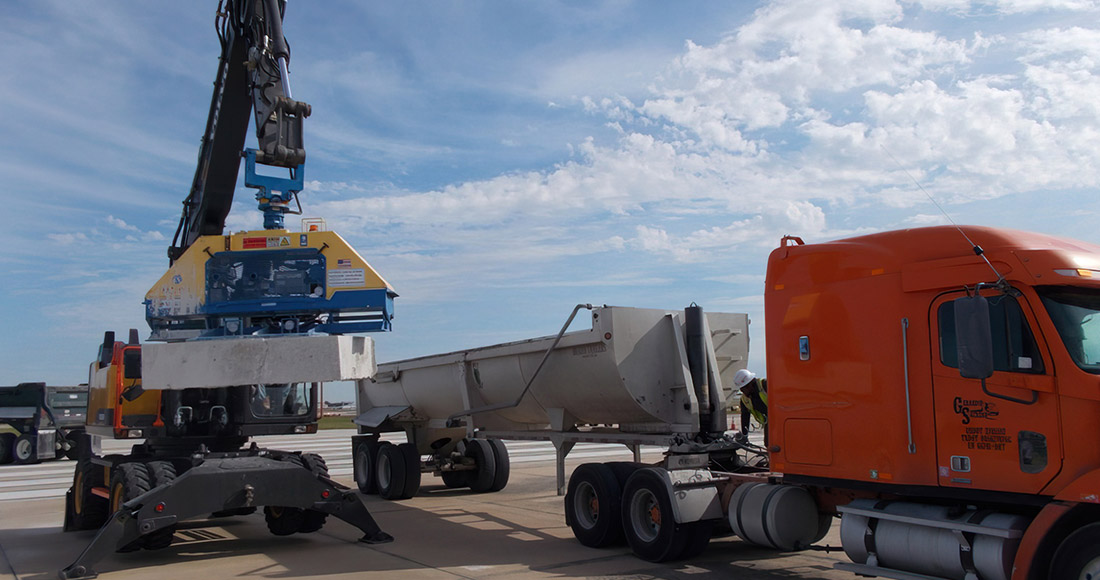The presence of Foreign Object Debris (FOD) can cause major headaches for airport authorities tasked with balancing day-to-day operations and the ongoing maintenance or construction of runways and taxiways. With multiple points of origination, FOD can be ingested into aircraft engines, causing damage or increasing the potential for an accident to occur.
It can be sourced to everything from airport infrastructures to personnel, wildlife and weather-related conditions, alongside an array of aircraft, fueling trucks, operational vehicles and maintenance equipment. In 2015, U.S. airfields handled approximately 8.7 million commercial flights, and more than 2.2 million passengers a day. It has been estimated by Boeing that FOD is responsible for approximately $4 billion in damage as aircraft and engines are removed from service each year. FOD is more common during construction activities as runway and taxiway materials such as concrete and asphalt chunks, joint material or paint chips are loosened. A big concern revolves around the potential for FOD to traverse onto flight areas from non-critical locations as projects get underway.
Concrete pavements, the Federal Aviation Administration (FAA) suggests, may be the most common source of FOD. To combat the influx of dust and debris, the administration offers guidance on procedures that emphasize containment and regular cleanup in relation to the proximity of airport operations and the construction process.
For the November 2016 rehabilitation of taxiways E and M at William P. Hobby Airport in Houston, Texas, Pulice Construction researched the safest, cleanest and most efficient method of removing two 50 ft. by 50 ft. sections of deteriorating concrete. Given that heavy machinery can place an inordinate amount of weight on concrete and threatens to damage integral surfaces, a secondary challenge for Pulice centered on overcoming issues related to mobility as moving a larger excavator with steel tracks into place would have required the application of a lowboy. Pulice ultimately decided on the rental of a concrete material handling system based on vacuum lifting technology, which was effective in sidelining the use of hydraulic jackhammers, helping to minimize the spread of dust during the contractor’s removal of 30 concrete slabs.
Construction standards circulated by the FAA note that extra caution should be demonstrated when transporting equipment on and off taxiways or runways, and include a general requirement that all equipment and material must be new, undamaged, and of the best grade.A Vacuworx RC 10 Series lifter, coupled with a Volvo EW180 rubber-tired excavator, was stored near one of the taxiways and light-footed enough to be driven safely into designated work zones. Pulice started on each 50 ft. section by coring holes to relieve pressure on the corners and performed saw-cuts while taking special care not to inflect damage on the edges of adjacent materials.
The RC Series lifter was outfitted with a variable pad system designed to isolate specific points of contact and make it easier to deal with irregularly shaped or badly deteriorated concrete. Eight of the 30 slabs handled by the contractor were 76 in. by 85 in. and weighed approximately 7,500 lb. each. The heaviest lifts included four slabs measuring 19 in. thick and weighing more than 10,500 lb. each.
“Some of the bond breaker held on pretty tight at the base,” said Johnnie Mata, a project manager with Pulice. “So we saw cut each corner and used a hydraulic jack to core a small hole while pulling the vacuum at the same time. There were only a few pieces that we had to hammer or break out. This was a critical repair and time-sensitive project at a busy airport. We had to think outside the box.”
Hobby Airport has four runways that serve more than 12 million passengers a year. The airport recently underwent a major overhaul that culminated with the opening of a new $156 million international concourse in 2015. The FAA asserts that contractors in this field should remain vigilant in their approach when assessing both the standard requirements and possible penalties associated with the control and removal of FOD.
Mata said fewer hammer strokes reduced the presence of dust and debris, allowing Pulice to shore up its FOD housekeeping efforts. The use of a wheeled-excavator, he said, allowed for near-seamless transition between the two taxiways and both phases of contractor’s project. The project, which kicked off in November 2016, was completed ahead of schedule in under a week. Mata said the average cycle time to pull all 30 slabs was 62 seconds.
The lifting system was also used to load waste concrete into trucks to be hauled away and recycled by Houston-based Cherry Cos. “We didn’t have to pick up rock chips or pieces of busted concrete all over the place,” Mata said. “It’s a piece of equipment we hadn’t used before. It would have been nice to have a bigger host machine, but the vacuum was pretty quick and provided for a much cleaner operation. (The airport authority) liked the vacuum lifter because it cut out all that dust.”


